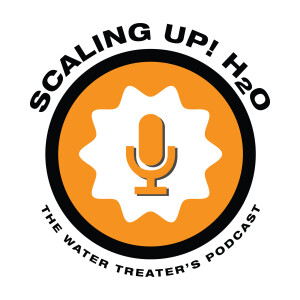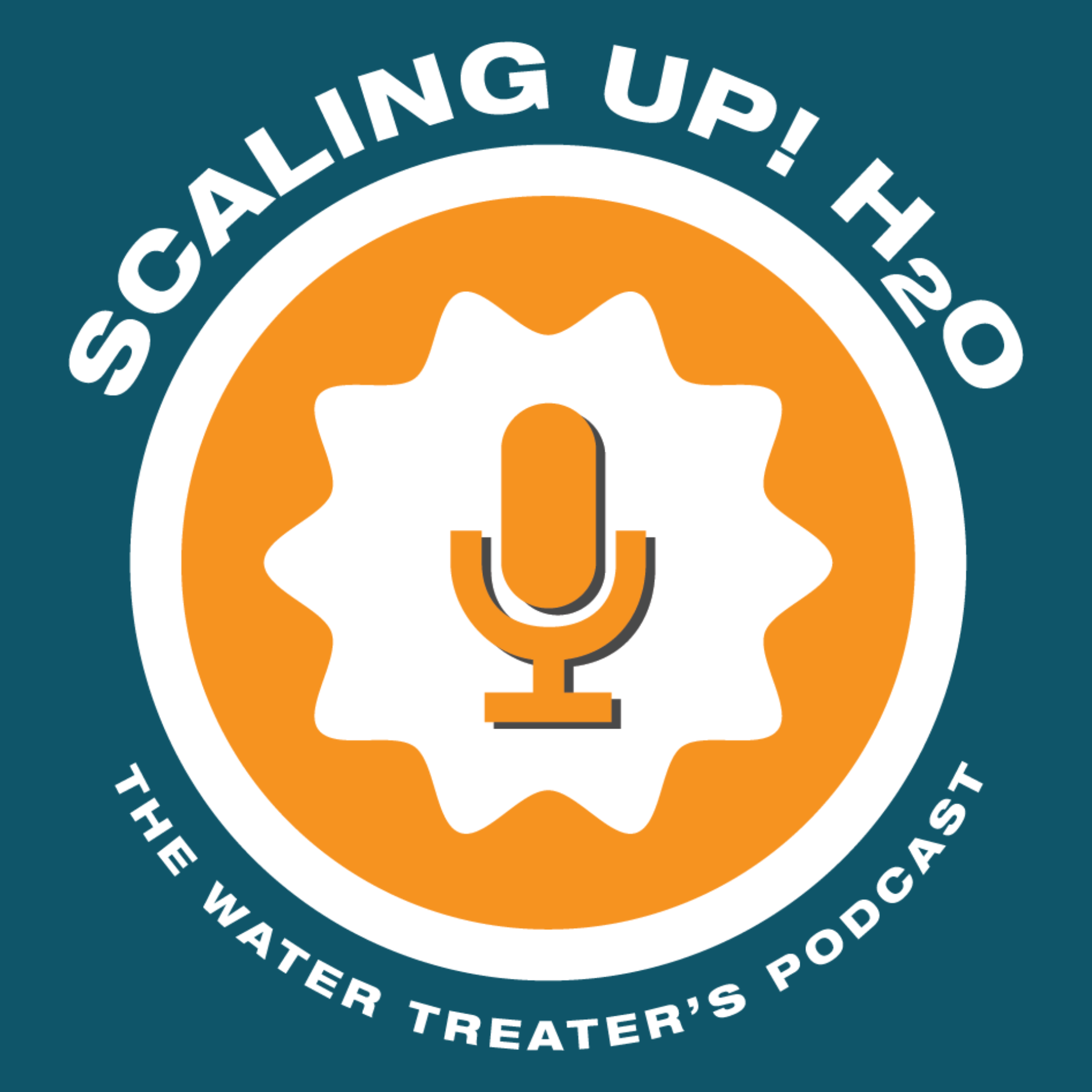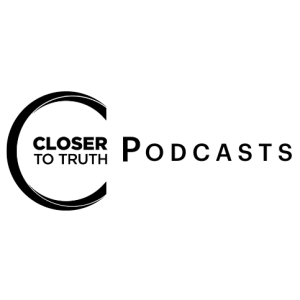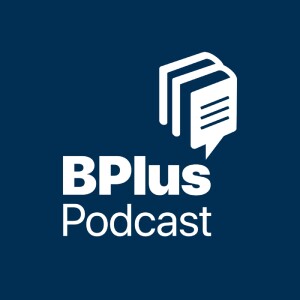

Episode List

453 Water Risk, Governance, and Community Engagement with Dr. Annette Davison
Industrial water professionals sit at the intersection of risk, regulation, and community trust. In this episode, Dr. Annette Davison ("the water risk doctor") joins Trace Blackmore to show how disciplined governance, clear supply chain thinking, and community engagement can turn fragmented water systems into coherent, defensible risk management frameworks. Water risk from source to customer Annette starts with a simple question most customers never ask: "Where's your water coming from?" She walks through a conceptual supply chain from source to end point—collection, transfer, treatment, distribution, and customers—then layers governance on top. Who holds custody at each handover point? Are water quality objectives clearly defined and documented? What happens when something "stuffs up," and how is that communicated downstream? For leaders, it's a practical reminder that risk isn't just about treatment performance; it's about clearly assigned responsibilities along the entire chain. Governance, ISO 31000, and the Water31K framework Drawing on her background in microbial ecology and environmental law, Annette explains why "you can't do a good risk assessment unless you've got the context right." She describes how ISO 31000 inspired the Water31K framework—an approach that is jurisdictionally agnostic and capable of spanning drinking water, recycled water, and recreational water guidelines. Using Water31K, her team walks into any jurisdiction and systematically maps stakeholders, legal and formal requirements, reporting lines, and internal obligations so utilities can see their governance landscape clearly before they start scoring risk. Critical control points, AI, and learning from incidents Critical control points may have started in the food industry, but Annette shows how they can be sharpened for water. Her test— "would a computer understand this?"—forces teams to close logical gaps and define thresholds and responses precisely enough to be automated. She also explores how AI and "agents as a service" could help analyze incident data, while warning that AI is useless if utilities haven't done the basics: monitoring the right things, at the right place, at the right time, with a firm grasp of supply chain risk. Her mantra: never waste a good incident; dissect it and make sure it doesn't happen again. Regulations, public–private contracts, and community projects Using Australia as an example, Annette unpacks the complexity of layered laws—Commonwealth, state, local—and the different regimes governing public, metro, and private utilities. She shares a five-part checklist for public–private contracts (quantity, quality, maintenance, ownership, operations) and explains how weak agreements can undermine water quality objectives and monitoring. In parallel, she talks about social initiatives like One Street and One Creek, community-led work on Rocky Creek, and bringing STEAM (not just STEM) into high schools so the next generation sees water as a diverse, creative career path. Strong water risk governance isn't just about compliance; it's about making better decisions for customers and communities over decades. This conversation gives leaders language, frameworks, and examples they can use to tighten their own systems and engage people beyond the plant fence. Stay engaged, keep learning, and continue scaling up your knowledge! Timestamps 02:15 — Trace reflects on the end of 2025, recap planning, and how goal setting shapes a stronger 2026 for sales and learning. 11:12 — Introducing lab partner Dr. Annette Davison and her diverse day-to-day across mediation workshops, field work, and high school outreach. 12:10 — The Risk Edge Group mission: protecting people, processes, and the planet from contaminated water with documents, templates, tools, and audits. 13:14 — "Incidents Online" as a free learning resource and how sharing real events helps others protect themselves. 14:10 — Becoming Australian Water Association's Water Professional of the Year and launching the One Street and One Creek social initiatives. 15:29 — From microbial ecology and contaminated sites to environmental law and a career focused on water quality governance. 19:47 — Training as a core "case study": lighting up operators and directors by finally explaining the "why" behind procedures and funding. 22:00 — Walking the water supply chain from source to end point and identifying governance handover points and quality objectives. 24:22 — Strategy-to-operations workflow: from planning and design to commissioning and operations, and why design must serve operators. 24:45 — Critical control points, space diarrhoea origin-story, and the discipline of defining CCPs so clearly "a computer would understand." 30:30 — How Water31K creates a common language for teasing out complex legal and regulatory structures across jurisdictions. 33:03 — The multi-layered Australian governance example: Commonwealth guidelines, state acts, and differing regimes for local, metro, and private utilities. 36:23 — Rocky Creek and the Karingai "Kraken" network: turning an unloved creek into a pilot for community care and data-driven education. 38:19 — onestreet.earth, mobilising your community, and building a playbook so others can replicate a "One Creek" model. 39:21 — STEAM power in schools: bringing science, technology, engineering, art, and maths together to improve water communication. 42:01 — Public vs private utilities, the Water Industry Competition Act, nimble private operators, and the five-part contract checklist. 44:39 — Emerging hazards (microplastics, PFAS) and the reminder not to take our eyes off the basics while we monitor new risks. 46:19 — Annette's core message: we've got to love water and help customers understand what it takes to keep it safe and reliable. Quotes "You can't do a good risk assessment unless you've got the context right." "Where's your water coming from? How do you collect it? How do you transfer it to where it needs to go to? How do you treat it?" "We now just keep asking ourselves the same question, will the computer understand this?" "AI's not going to help us until we get the right inputs to AI. Let's get the basics right first." "We've got to love water. We've got to make sure that people are aware of water, not only the technocrats, but also the people who are using it." Connect with Annette Davison Email: annette@riskedge.com.au Website: https://www.riskedge.com.au/ LinkedIn: https://www.linkedin.com/in/annettedavison/ Guest Resources Mentioned The Risk Edge Group – Water31K Framework & Services Incidents Online (Risk Edge) Risk Edge Training (e.g., CCP and Governance Courses) Ku-ring-gai Community Rotary Network ("the Kraken") Australian Drinking Water Guidelines (ADWG) WHO Guidelines for Drinking-water Quality The Overstory – Richard Powers The Three-Body Problem – Cixin Liu The Covenant of Water – Abraham Verghese Scaling UP! H2O Resources Mentioned AWT (Association of Water Technologies) Scaling UP! H2O Academy video courses Submit a Show Idea The Rising Tide Mastermind 2025 Events for Water Professionals Check out our Scaling UP! H2O Events Calendar where we've listed every event Water Treaters should be aware of by clicking HERE.

452 UV Innovation and Whole-Building Water Safety with Ron Blutrich
Entamoeba histolytica nearly ended Ron Blutrich's scientific career. Instead, it pushed him to rethink how we protect people in multi-family buildings, senior facilities, and dense urban centers from invisible microbiological risks in their drinking water. In this episode, he joins host Trace Blackmore to unpack what whole-building UV can (and can't) do for Legionella, biofilm, and real-world water safety. When One Bad Cup of Water Redefines a Career In the middle of his PhD in molecular genetics, Ron drank from an under-sink reverse osmosis tap at an Airbnb and contracted Entamoeba histolytica. The infection triggered more than three years of severe gastrointestinal symptoms and a 100-pound weight loss, despite being "clinically cured." That experience—and the lack of clear answers—led him to dig into how governments, utilities, and buildings actually manage microbiological risk in water. He discovered that even in urban centers, there is "a lot left to be desired" in monitoring, guidelines, and the epidemiology of waterborne disease. UV at the Point of Entry: Why Medium Pressure Matters Ron explains why he chose UV as the primary disinfection tool for CLEAR's whole-building solutions. He contrasts conventional filters (carbon, RO, media) that remove contaminants but do not kill biology with UV systems that directly target DNA and other cellular structures. He walks through the differences between low-pressure and medium-pressure UV, including temperature independence for hot water recirculation and the broader wavelength spectrum that can damage DNA, proteins, membranes, and even DNA repair enzymes. That same technology is being used for multicellular control in marine environments, ballast water, and mollusk control, and Ron argues it is uniquely suited to domestic hot water systems facing Legionella and biofilm. Legionella, Biofilm, and the Limits of "Good Enough" Drawing from CLEAR's field work, Ron describes how often Legionella shows up in single homes, condos, and new buildings, and how standard practices typically focus on remediation and short-term clearance instead of long-term prevention. He highlights the gap between ASHRAE 188's recommendations for hot water temperatures and real constraints in senior housing, where anti-scalding concerns keep tanks too cool to reliably control Legionella. He also shares stories of property managers and public agencies reluctant to test because they lack cost-effective treatment options or don't want to confront what the data might show. Scaling UV from Towers to Single Homes Ron walks through why conventional media and RO systems don't scale well to large towers—footprint, cost, and pressure loss—and how CLEAR instead installs inline UV systems at the point of entry. These systems can handle up to roughly 2,000 gallons per minute, require minimal head loss, and are designed as a single point of installation and service. From there, he explains how his team layered on monitoring and a tenant-facing dashboard so that properties can see UV dose, transmittance, and flow in real time, and service can be triggered based on performance instead of fixed schedules. He also discusses emerging opportunities in UV LEDs and next-generation media that could make fully comprehensive point-of-entry treatment feasible in more buildings. For leaders responsible for building portfolios, senior living, or high-density residential properties, this conversation offers a rigorous look at what it really takes to move from "we hope the water is fine" to a defensible, data-backed stance on microbiological safety. Stay engaged, keep learning, and continue scaling up your knowledge! Timestamps 04:59 - Trace talks about skipping turkey and ham this year and explains his usual turkey-stock "ice cube" tradition 13:59 - Trace introduces today's lab partner, Ron Blutrich of Clear Inc., and sets up the UV-in-buildings topic 13:03 – Events page shout out 10:57 - Water You Know with James McDonald 16:21 – Drinking from an under-sink RO line at an Airbnb, contracting Entamoeba Histolytica 19:15 - Why unmaintained RO and carbon filters can increase microbiological risk 23:27 - UV to keep post-UV systems cleaner 34:51 – Installation 40:23 – Cyanotoxins, Great Lakes algal blooms, and using medium-pressure UV to denature toxins, not just microbes 43:31 – Ron's current habits 48:08 – Future Opportunities: UV LEDs 49:04 – Multi-spectral UV LED arrays Quotes "And what I learned really changed my life, because what I understood is that even in urban settings, not just in remote communities, there's a lot left to be desired when it comes to water quality, water quality treatment, guidelines, monitoring" - Ron Blutrich "I think that in general, we need to understand with our eyes open exactly what it is that we do when we treat." - Ron Blutrich "So generally, there's a lot left to be desired in terms of what we're trying to do for Legionella. It turns out that Legionella is extremely susceptible to UV. Legionella can be reduced almost 6 logs with most conventional UV systems" - Ron Blutrich "So, at this point, our UV systems, it's an inline system. It's basically a section of pipe that happens to disinfect the water going through it. It's a single point of installation, a single point of service. There's no head loss, there's no pressure loss" - Ron Blutrich Connect with Ron Blutrich Email: ron@clear.inc Website: Clear - UV Treated Purified Water at Point of Entry LinkedIn: https://www.linkedin.com/in/ron-blutrich-50262b2a3/ Guest Resources Mentioned ORIGINS OF ORDER: Self-Organization and Selection in Evolution by Stuart Kauffman Pale Blue Dot: A Vision of the Human Future in Space by Carl Sagan Clear Inc – Whole-Building UV Water Purification Entamoeba histolytica Infection CDC Household Water Treatment EPA Guidance Manual: Filtration and Disinfection Requirements WQA Guidance for Sanitizing Residential Treatment Systems Application of Ultraviolet Light-Emitting Diodes (UV-LED) to Full-Scale Drinking-Water Disinfection Wilderness Medical Society Clinical Practice Guidelines on Water Treatment for Wilderness, International Travel, and Austere Situations Scaling UP! H2O Resources Mentioned AWT (Association of Water Technologies) Scaling UP! H2O Academy video courses Submit a Show Idea The Rising Tide Mastermind Water You Know with James Question: What is the interaction called when chemicals react on a mole-to-mole basis that could possibly be considered the opposite of the Threshold Effect? Events for Water Professionals Check out our Scaling UP! H2O Events Calendar where we've listed every event Water Treaters should be aware of by clicking HERE.

451 Building a Culture of Innovation and Customer Service with Frank Lecrone
What happens when you build a company around one niche, listen obsessively to customers, and never stop improving? In this episode, host Trace Blackmore finally sits down for a full-length conversation with Frank Lecrone, Founder, President, and CEO of AquaPhoenix Scientific. What started in a small 60' x 60' space in Hanover, Pennsylvania, with three employees, maxed-out credit cards, and endless Staples runs has grown into a 300+-person organization serving industrial water professionals around the world. Frank shares how AquaPhoenix became "the booth everyone wants to be next to" at AWT, why they built their entire business around industrial water treatment instead of trying to be everything to everyone, and how a simple continuous improvement system now generates hundreds of ideas a year from frontline team members. He also pulls back the curtain on acquisitions and private equity, explaining EBITDA in plain language, how to think about "add-backs," and what owners should understand long before they think about selling. Whether you're leading a growing company, running a route, or thinking about your own "second chapter," this conversation is a masterclass in culture, courage, and caring deeply about the people you serve. Stay engaged, keep learning, and continue scaling up your knowledge! Timestamps 02:20 - Trace Blackmore shares a recap from the recent 2025 AWT Conference, The Hang, and a Blood Donation Story 14:02 - Water You Know with James McDonald 15:20 - Upcoming Conference for Water Professionals 18:16 – Introduction of Frank Lecrone, CEO of AquaPhoenix Scientific (eight years in the making) 24:52 – Why Hanover? 26:59 – Supporting AWT 37:38 – Color-coded caps & QR Codes 42:30 – Learning from mistakes 45:31 – Core Values 48:26 – Acquisitions and Culture 1:03:32 – Valuations and EBITDA Quotes "We didn't grow by doing everything for everyone. We grew by doing exactly what one market needed and wanted—and then doing it better every year." "The lack of information is almost always interpreted negatively. That's why you have to over-communicate, especially during acquisitions." "EBITDA equals freedom. The more EBITDA you have, the less anybody can tell you what to do with your own company." "We're not perfect. We screw things up like everyone else—but we fix it, and we fix it quickly, and we make doing business with us as easy as possible." "I don't want to be the smartest person in the room. I want great people around me, giving ideas and pushing things forward, so I'm not the bottleneck." "Business is like standing in a bathtub while the water rises. It feels fine until it reaches your mouth. The trick is noticing when it's at your knees and fixing the bottleneck then." "We give a darn. We have 'GAS'—Give a #$%@—and if we can make it right and do it better, we absolutely will." Connect with Frank Lecrone Email: frank@aquaphoenixsci.com Website: Water Quality Testing Products | AquaPhoenix Scientific LinkedIn: Frank Lecrone | LinkedIn Guest Resources Mentioned AquaPhoenix Scientific Aliquot – AquaPhoenix's Water Management Software QR-coded Custom Test Kits (AquaPhoenix EndPoint® ID) Scaling UP! H2O Resources Mentioned AWT (Association of Water Technologies) Scaling UP! H2O Academy video courses Submit a Show Idea The Rising Tide Mastermind American Red Cross Water You Know with James McDonald Question: What industrial water treatment word is derived from the Greek word meaning "claw?" 2025 Events for Water Professionals Check out our Scaling UP! H2O Events Calendar where we've listed every event Water Treaters should be aware of by clicking HERE.

450 Wastewater Advocacy and Innovation with Robin Deal
"The More You Know" - Robin Deal A million-gallon-a-day perspective, distilled into actionable steps. Robin Deal, AquaPure Product Manager at Hubbard-Hall unpacks how seasoned pros can squeeze more performance—and less sludge—out of industrial wastewater systems without compromising compliance or plant uptime. From "clear water in a jar" to stable discharge in the field Robin details a practical jar-testing workflow: start from upstream processes, target pH using hydroxide/sulfide solubility curves, choose the right coagulant (aluminum, iron, calcium, lanthanum, or organics), and validate against metals/COD/BOD/phosphorus before scaling. The test bench isn't the finish line; it's the feasibility gate when you're treating 150,000+ gpd. Lean wastewater: cost center or controllable system? Commodity choices (lime, alum, ferric) can generate 70–85% more sludge than optimized blends—driving hazardous waste hauling, clogging lines, and shortening pump life. Robin reframes the "penny-per-pound" price war into a total-system economics conversation: sludge recyclability, maintenance cycles, and realistic break-even targets. PFAS: remove now, plan to destroy For hex-chrome platers and other industrial dischargers, Robin shares near-term and emerging options: carbon filtration for immediate removal, evaporation/condensation where capital exists, and destruction pathways under evaluation—advanced oxidation, electrochemical oxidation, "thermobotic agglomeration," and ball milling—with an eye on evolving limits and cost realities. One Water thinking for manufacturers "Water is water." Robin introduces the One Water mindset for plant leaders: tighten internal loops, reduce community draw and discharge impact, and align non-contact, potable, and wastewater under one stewardship model. It's not a club—it's a decision framework that's already influencing global brands and drought-stressed regions. Treat each round of testing as a hypothesis check, each chemical as a system lever, and each gallon as a shared resource. That's how leaders turn compliance into predictable results. Stay engaged, keep learning, and continue scaling up your knowledge! Timestamps 16:45 - Trace Blackmore shares insights on current industry events, an upcoming conference, the "magic button" idea for user-friendly wastewater control and announces The Hang to build community engagement 17:50 - Water You Know with James McDonald 23:04 - Interview begins: Robin Deal introduced as AquaPure Product Manager, origin story and family context 28:12 - First Jar Test Story 32:17 - Jar testing Workflow 42:34 - One Water concept 54:12 - Regulations Quotes "Just say yes to the job." "Lime is not a lean." "Best available technology does not mean best economic." "So just deep breath, stay calm and do the best that we can do and wait for those regulations to come out because they are coming" "Turn off the water in the polymer tank." Connect with Robin Deal Email: robin.renee47@yahoo.com LinkedIn: www.linkedin.com/in/robin-deal https://www.linkedin.com/company/hubbard-hall-inc./ Guest Resources Mentioned The Wandering Inn: Book One in The Wandering Inn Series by pirateaba Water Reuse Organization American Water Works Association Water Environment Federation Scaling UP! H2O Resources Mentioned AWT (Association of Water Technologies) Scaling UP! H2O Academy video courses Submit a Show Idea The Rising Tide Mastermind Start With Why Simon Sinek TedTalk The 6 Types of Working Genius: A Better Way to Understand Your Gifts, Your Frustrations, and Your Team by Patrick M. Lencioni James McDonald's Be Like Water Series Drop by Drop: Articles on Industrial Water Treatment by James McDonald Water You Know with James McDonald Question: What is the device called that is installed on the effluent line of an ion exchange unit to prevent resin from ending up downstream where it doesn't belong? 2025 Events for Water Professionals Check out our Scaling UP! H2O Events Calendar where we've listed every event Water Treaters should be aware of by clicking HERE.

449 Michael Bourgeois on AWT Partnerships and Professional Growth
Get stuck in – Michael Bourgeois, CWT How do standards get written in ways that working water treaters can actually meet? In this conversation, AWT Past President, current Related Trade Organization (RTO) Committee Chair, and Chemco Products Company Operations Manager, Michael Bourgeois CWT, explains how AWT's liaisons collaborate with peer organizations, so guidance reflects field reality—operations, risk, and achievable compliance. From Field Bags to Board Rooms: Why RTOs Matter Bourgeois outlines the purpose of AWT's RTO structure: volunteer liaisons track and influence work at groups whose missions overlap with industrial water—CTI, ABMA, ASHRAE, AWWA, ASHE, and others. The aim is simple and practical: make sure member voices are heard so guidance advances health outcomes (e.g., Legionella control) and day-to-day feasibility for service providers and suppliers. Turning Reaction into Proaction Historically, the industry learned about new rules after they landed. Bourgeois details how AWT is shifting to co-authoring cooling-water guidelines with CTI and re-engaging ABMA, so boiler-water limits and methods reflect current technologies and operations. The model: clarify shared goals, contribute content expertise, and formalize collaboration so members get usable documents at member pricing. Concrete Moves: Boiler Water, Healthcare, and More Examples include AWT's role on ABMA's Boiler Expo steering committee (with a focused water-treatment training block) and early conversations with ASHE on pathogen control in building and healthcare water systems. He describes how liaisons feed updates into a formal committee cadence, so the AWT Board and members see progress—not just headlines. When working professionals help write the playbook, outcomes improve clients, operators, and public health—and members stop "reacting" to standards they had no hand in shaping. Listen to the full conversation above. Explore related episodes below. Stay engaged, keep learning, and continue scaling up your knowledge! Timestamps 00:02:28 - Trace Blackmore shares his AWT excitement & community shout-outs 00:05:16 - Water You Know with James McDonald 00:06:44 - The magic of the Scaling Up buttons (why & how to use them) 00:20:25 - North Metal Quarterly Magazine (Grab physical copy by visiting Booth 212) 00:27:00 - Interview starts: Mike Bourgeois (Chemco; AWT Past President; RTO Chair) 00:33:58 - What is the RTO Committee and why it exists 00:36:31 - The 10 formal collaborators + 4–6 informal 00:36:43 - AWWA/ASDWA (Joe Hannigan); Premise plumbing link 00:38:19 - ASHE (healthcare engineering) early wins (Reid Hutchinson) 00:38:47 - ABMA (boilers) momentum (Steve Jobin) + Women of Boilers 00:40:28 - CTI (Mike); CDC (Patsy Root); WEF (Brian Liotta) 00:40:46 - AMPP (formerly NACE) (Jay Farmerie); WQA (Chuck Hamrick) 00:41:19 - ASHRAE (Bill Pearson) & the impact on Std 188 00:45:26 - Principle: Be proactive so standards are achievable for members 00:47:34 - Boiler Expo: half-day on water treatment (economics, pretreatment, failures, regs) 00:50:56 - Where to learn about RTO work 00:54:19 - Volunteers needed: attributes of great liaisons 00:58:48 - Breakthrough: ABMA boiler water guideline refresh (toward ASME alignment) 01:01:02 - Potential collaboration with ASHE on pathogen control guidance 01:01:39 - What Mike's most excited to see at the Broadmoor 01:02:22 - Mike's session: new OSHA walk-around rules 01:02:51 - Theme of the conversation: "Get stuck in" (join committees) Quotes "The button is magic—it breaks the ice for you and starts real conversations." "Talk to every single booth. A year from now, you'll remember exactly who can help." "RTO stands for Related Trade Organization—our way to shape the standards that shape us." "Why write a standard no one can achieve? AWT's role is to make it achievable." "If you want to help AWT, get stuck in. Volunteer. It pays back 10 to 100-fold." "AWT's RTO liaisons keep members' interests represented before rules and guidelines are finalized—so they're practical and achievable." "Look for committees aligned with your strengths." Connect with Michael Bourgeois Email: mbourgeois@chemcoprod.com Website: Home | Chemco Products Company LinkedIn: Michael Bourgeois, CWT | LinkedIn https://www.linkedin.com/company/chemco-products-company/ Guest Resources Mentioned ABMA's Boiler Water Quality Requirements and Associated Steam Quality for Industrial/Commercial and Institutional Boilers Atlas Shrugged (Centennial Ed.) Hardcover – April 21, 2005 by Ayn Rand AWT Committee AWT Get Involved Cancer Ward: A Novel (FSG Classics) Paperback – April 14, 2015 by Aleksandr Solzhenitsyn (Author) Cooling Technology Institute (CTI) Fossil Future: Why Global Human Flourishing Requires More Oil, Coal, and Natural Gas--Not Less Hardcover – by Alex Epstein Signature in the Cell: DNA and the Evidence for Intelligent Design Paperback – Illustrated, June 22, 2010 by Stephen C. Meyer WTG-126: The Use of Non-Oxidizing Biocides in Cooling Water Systems Scaling UP! H2O Resources Mentioned 380 The WOW Effect: Women Leading Transformation in the Water Industry 447 Unlocking Team Potential with Culture Index with Randi Fargen ASHE's "Water Management in Health Care Facilities: Complying with ASHRAE Standard 188" ASPE's Engineering Methodologies to Reduce the Risk of Legionella in Premise Plumbing Systems ASSE 12080 Training & Certification, Get certified to the ASSE/IAPMO/ANSI 12080 Standard: Professional Qualifications Standard for Legionella Water Safety and Management Personnel AWT (Association of Water Technologies) AWT's Legionella 2019: A Position Statement and Guidance Document North Metal & Chemical Co Quarterly Magazine Issue 3 -page 8 for Trace Blackmore Story Scaling UP! H2O Academy video courses Start with Why Simon Sinek - TedTalk Submit a Show Idea The 6 Types of Working Genius The Rising Tide Mastermind Water You Know with James Questions: What do you call the physical property of matter that is defined as the amount of heat energy required to raise the temperature of a unit mass of a substance by one degree? 2025 Events for Water Professionals Check out our Scaling UP! H2O Events Calendar where we've listed every event Water Treaters should be aware of by clicking HERE.
You may also like
Create Your Podcast In Minutes
- Full-featured podcast site
- Unlimited storage and bandwidth
- Comprehensive podcast stats
- Distribute to Apple Podcasts, Spotify, and more
- Make money with your podcast












